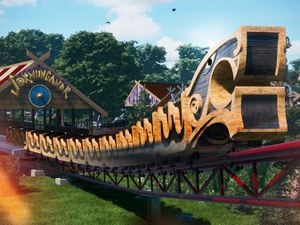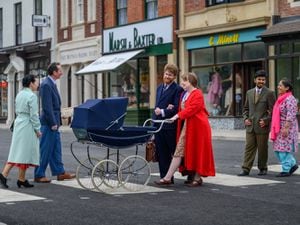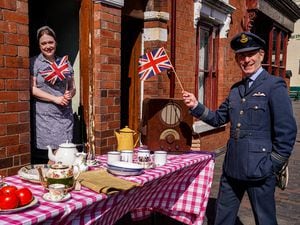From picturesque walks to renowned tourist hotspots: Toot, toot! For the best of our region's attractions
We were thinking of ‘doing a Grant Shapps’ – of abandoning ship at a time of greatest need and spending all our money on overseas business while Britain goes down the tubes.
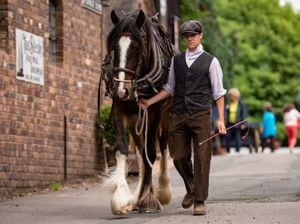
But here at Weekend, we like to think we’re made of sterner stuff. Not for us a diet of sun, sand and sangria when we can support local business by quaffing foaming jugs of real ale (Bathams, if you please) while feasting on deep fried pork rind from the Black Country and eating the very delicious and quintessentially Salopian Fidget Pie.
Why would we admire the fine tapas of Barcelona when we can get a full English breakfast wrapped in a Staffordshire oatcake? What point would there be in flying all the way to Spain to marvel at the work of Gaudi when we can drive a few miles to Ironbridge to enjoy the birthplace of the Industrial Revolution.
Tourism has taken a kick in the pork pies since March and while a huge number of businesses and attractions across the Black Country, Staffordshire, Shropshire and into Mid-Wales would presently be welcoming Nikon-wielding tourists from across the world they are instead in a state of torpor.
While other publications will flag up such staycation essentials as the Amazon Kindle Paperwhite, the Beats Beats Pill, the cute, cuddly and very pink Amazon Fire Kids Tablet or the swimproof Apple Watch Series 3, we will instead focus on the more prosaic and parochial.
So, without fear, it’s time to toot toot from the rooftops about Shrewsbury biscuits and faggots and peas, about the Black Country Museum and Dudley Zoo and about riding a coracle down the River Severn in Shrewsbury or walking along the beautiful Mid-Wales border.
Throw away your passport, avoid the 14-day post-Spain quarantine and enjoy the magnificent and splendiferous attractions, gastronomy and people of this ‘ere region. Ladies and gentlepeople, it is time for your definitive guide to not crossing the region’s borders and making the most of the Seven Wonders of the West Midlands.
Actually, there’s 18...
Ironbridge Gorge
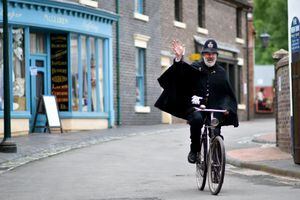
A World Heritage Site and the beating heart of the Industrial Revolution, the Ironbridge Gorge is home to some amazing museums that make for an unforgettable experience.
Blists Hill Victorian Town, Coalbrookdale Museum of Iron and the Furnace Kitchen are now open.
The shops at the Museum of The Gorge and the Iron Bridge Tollhouse are also open.
The Blists Hill Victorian Town allows you to step back in time – to an age when even Coronation Street hadn’t been invented.
Enjoy a glimpse of the age of Queen Victoria and experience what life was like when Britain ruled the world.
Meet some (almost) real Victorians in their authentic shops and cottages, buy curious goods from a bygone era and watch tradespeople in action in their atmospheric workshops and factories.
Ironbridge was, of course, the birthplace of the Industrial Revolution where Abraham Darby perfected the technique of smelting iron with coke, in Coalbrookdale, allowing much cheaper production of iron. The 30m cast iron footbridge, which opened in 1781, still stands.
Ludlow
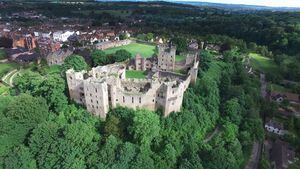
Famously described by John Betjeman as “the loveliest town in England“, and with over 500 listed buildings, mainly Georgian or half-timbered, Ludlow is a feast for the eyes.
Ludlow Castle is situated on an excellent defensive site in a bend of the River Teme just south of where it is joined by the River Corve.
A settlement soon grew up around the castle. Ludlow’s town was carefully planned by the Normans and the rectangular street plan can still be seen in the medieval heart of the town.
Town walls were built between 1233 and 1304, with seven gates, one of which, Broadgate at the bottom of Broad Street, still survives.
The town’s reputation for great food grew around 2000, when it boasted four, now-closed Michelin-starred restaurants.
If you’re heading to the south Shropshire town, make sure to visit the Ludlow Food Centre, which has unrivalled produce for sale.
Black Country Living Museum
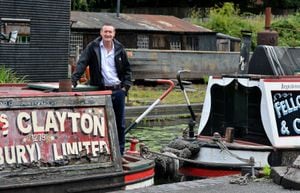
Long before the days when Black Country residents were ridiculed as yam yams and incorrectly thought to have a low IQ because of their pronunciation – it ay true, we ay saft – the region bustled with industry.
The Black Country Living Museum provides a remarkable reminder of the region’s past.
An immersive experience from start to finish, Black Country Living Museum is an award-winning open air museum that tells the story of one of the very first industrialised landscapes in Britain.
Set across 26 acres, you’ll explore over forty carefully reconstructed shops, houses and industrial areas that represent the Black Country’s story.
You’ll learn how steam power, human ingenuity and an increasingly interconnected world transformed this region into a manufacturing powerhouse.
You’ll meet our historic characters who’ll tell you stories of what it was really like to live and work during this revolutionary period of history.
Most importantly, you’ll see history brought to life before your eyes – you’ll hear the clang of hammers; smell the smoke billowing from red brick chimneys; and maybe even taste the best fish and chips in the world.
West Midland Safari Park
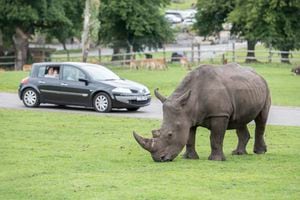
The days of mischievous monkeys hanging off your car windows and trying to steal the wiper blades are long gone.
Instead, the park, near Bewdley and Kidderminster, is a thoroughly modern enterprise that showcases white lions, white tigers, lemurs and goats – but not in the same pen; things might get messy.
The walk-through areas of the park opened on July 4, so you can now visit areas like Penguin Cove, Land of the Living Dinosaurs, Ice Age, Aquarium, Hippo Lakes, Meerkat Mayhem and Reptile House.
The Twilight Cave, Lemur Woods and Goat Park will remain closed until further notice.
The theme park will be open with new safety measures. Ride wristbands and tickets are charged extra.
Dudley Zoo
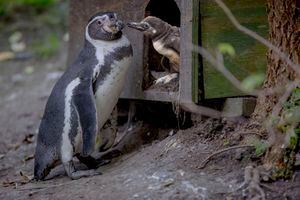
In a brilliant routine, Lenny Henry famously described the psychotic polar bears who were kept by the zoo in less enlightened times.
These days, the zoo is an exemplar of best practice and is at the forefront of conservation work that is helping to preserve a range of species.
The zoo which opened in May 1937, covers an area of approximately 40 acres.
This unique site includes two scheduled monuments – an 11th century castle and limestone caverns – and 12 Grade 2 listed Tecton buildings (four Grade 2*).
The idea to convert Dudley Castle’s grounds into zoological gardens came from its then owner, the third Earl of Dudley, who chose a team of Modernist architects to design the zoo.
Using reinforced concrete they created a revolutionary new design of building: Tectons.
The structures have stood the test of time and eight decades on Dudley Zoo has the world’s largest single collection of Tectons, which in 2009 received World Monument Status.
Today the Tectons are boosted by a variety of animal housing, paddocks and enclosures which are home to our wide variety of 200 species.
Much of the animal collection is linked to international conservation and breeding programmes and several of our global projects have received awards.
Endangered species include Asiatic lions, Sumatran tigers, Bornean orang utans, Tibetan red pandas, Rothschild giraffes, Madagascan lemurs and Humboldt penguins – DZC has the UK’s largest parent-reared colony.
Duncan Edwards Statute
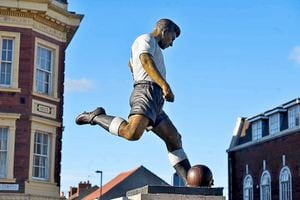
While protestors around the world have been pulling down statues, none have dared to deface the tribute to the great and iconic Duncan Edwards.
Not even Baggies fans. Dudley makes a great show of being the birth place of Edwards, who was killed in the Munich air crash in the 50s.
Fans make pilgrimages to the statue, which stands in a now sparse old market place within a rundown town centre.
Saltwells Local Nature Reserve
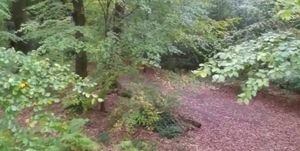
Planted in the 18th century by Lady Dudley to hide the scars of coal mining, Saltwells Local Nature Reserve is now one of the UK’s largest urban nature reserves, covering 247 acres.
Daphne Pool has 16 recorded species of Dragonfly while there is extensive bluebell woodland with woodland birds.
The recolonized old clay pits are full of orchids and the area has geological sites of special scientific interest - showing the best exposure of the Staffordshire coalfields and Brewin’s Cutting.
At the heart of the nature reserve stands Saltwells Wood. It became part of Lord Dudley’s Saltwells Estate after the enclosure of Pensnett Chase in 1785.
At the time, wood was in high demand, especially for charcoal for the budding iron industry, so the area was planted with trees.
During at least the 19th century, the woodland west of the Black Brook was called Lady Dudley’s Plantation or Lady Wood (perhaps in honour of Lady Dudley), whilst that to the east was known as Birch Wood.
The descendants of the Oak and Beech still survive and are home to many species of woodland bird, such as Treecreeper, Jay and Great Spotted Woodpecker.
Wild garlic and anemones are found in the wood together with lush carpets of bluebells.
Recently presented with a Centre of Excellence award by the Forestry Authority for woodland management, Saltwells has long been a model urban reserve for Europe under UNESCO’s Man and the Biosphere project.
Holden’s Brewery

There are numerous brew pubs and micro breweries across the region, with Holden’s among the best.
Things at the Woodsetton site have come a long way since its humble beginnings in The Park 100 years ago and 2015 saw the completion of our new tank room, which increased capacity by 50 per cent along with the recommencement of Brewery Tours from February 2015.
Holden’s has a fascinating history. Edwin Alfred Holden the youngest of seven boys was born on March 15, 1875.
While Edwin worked in the family boot making business his local was ‘The Trust in Providence’ public house.
Edwin combined his drinking with courting the Landlords daughter, Lucy Blanche Elizabeth who worked behind the bar.
The couple married at St Andrews Church Netherton in October 1898, Edwin was 23 years old and his new bride 20.
Edwin’s father-in-law persuaded the newly-weds to take the tenancy of The Britannia Inn at Northfield Road, Netherton where they stayed for 6 years.
In 1904 Edwin and Lucy moved to The Struggling Man in Shavers End, Dudley, which was another Atkinson’s pub and in 1907 they then moved to The Horse and Jockey, Dibdale Lane, Lower Gornal where Edwin Alfred Holden (Teddy) was born on November 30, 1907.
Teddy had two sisters born before himself but neither survived more than a few months.
After a year at The Bloomfield Inn in Tipton a move to The Summer House in Woodsetton was made in 1910.
Wren’s Nest National Nature Reserve
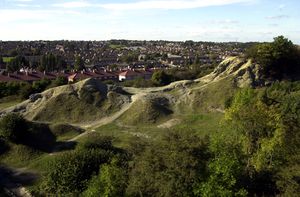
Wren’s Nest National Nature Reserve of exceptional importance.
It is one of the most notable geological locations in the British Isles and visited and studied by geologists from all over the world.
Wren’s Nest has been fortunate to receive Heritage Lottery and Natural England funding for improvements around the National Nature Reserve.
In 2008, the Heritage Lottery Fund (HLF) awarded a grant of nearly £800,000 to Dudley Council to enhance Wren’s Nest National Nature Reserve for its’ project, Ripples Through Time.
Lower Drayton Farm
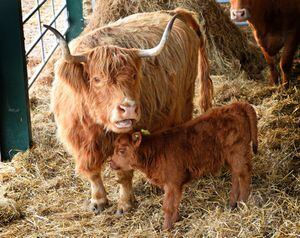
Summer is unlocked in Penkridge with great family days out on offer.
With a host of outdoor and open-barn play activities on offer, plus lots of friendly animals to meet it’s the perfect way to spend time as a family while the kids let off some steam in the countryside.
Lower Drayton’s resident guinea pigs have been busy during lockdown – they’ve had five babies. What else was there to do?
Stafford Castle and Visitor Centre
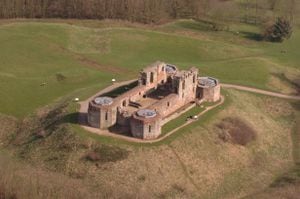
Stafford Castle is an ancient Grade II listed castle situated two miles west of the town.
The castle was remodelled in the early 19th century by the Jerningham family in the Gothic Revival style, on the foundations of the medieval structure, and incorporates much of the original stonework.
Originally built by Robert de Toeni, (later known as Robert of Stafford), in the Norman period, Stafford Castle has dominated the local skyline for over 900 years.
In the years shortly after the Norman invasion of 1066, William the Conqueror is believed to have ordered defences to be built against a still hostile and rebellious native community.
The fortunes of the castle and its owners, the Stafford family, fluctuated greatly.
Weston Park
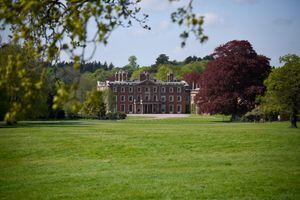
One thousand acres of Capability Brown parkland are available at Weston Park, where visitors can seek out new adventures and enjoy a great coffee from our Stables Takeout.
Areas open to explore include Temple Wood and the Woodland Adventure Playground, the wider Capability Brown parkland, Walled Garden and Formal Gardens.
A Parkland Walks map will be available at the admissions point highlighting various walking routes where you can get off the beaten track.
Areas that remain closed are the house, the maze, the miniature railway, art gallery and STUFF! Craft Room.
National Memorial Arboretum
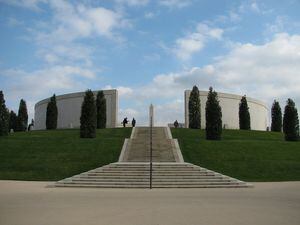
The Arboretum is an evolving, maturing woodland landscape featuring 30,000 trees and a vast collection of memorials.
The 150-acre site is a living, growing tribute to those who have served and continue to serve our country.
The Arboretum is home to over 350 thought-provoking memorials, each with a story to be discovered.
The memorials are diverse in nature, rich in symbolism and collectively represent a broad population of society from military associations, charitable organisations, emergency services, fraternity groups and individuals.
Each year new memorials are added so there’s always something new to see.
Lichfield Cathedral
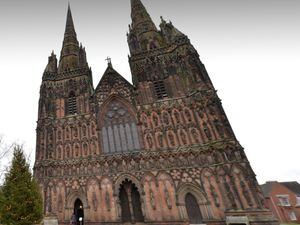
The Cathedral’s doors are open to welcome back visitors for sight-seeing, private prayer and reflection and attendance of services.
However, for those not ready to venture out, the site provides 3D virtual tours online, with an opportunity to explore St Chad’s Head Chapel and enjoy 360-degree views.
Severn Valley Railway
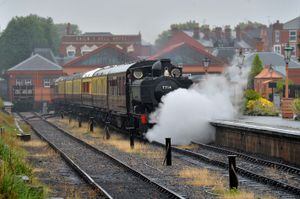
The Severn Valley Railway reopens for daily passenger services from today with a range of excursions aimed at bringing families together for an enjoyable day out.
Tickets must be booked in advance and are now on sale.
General manager Helen Smith said: “We are hugely excited to be making this announcement after three and a half months of enforced closure because of the coronavirus pandemic.
"We’ve put a great deal of thought and planning into our offering and have been careful to balance the need for social distancing and other safety measures, with making sure our visitors enjoy a long-awaited and exciting day out.”
RAF Museum Cosford

Cosford is now open daily, with tickets free. Go online to book a ticket.
The Cosford site includes several developmental aircraft such as those that led to the English Electric Lightning and the second prototype of the BAC TSR-2.
A lot of the aircraft are very rare, such as the only Boulton Paul Defiant in the world and one of only two surviving Vickers Wellingtons left in the world.
In 1980, the Cosford site agreed to house the British Airways Museum collection.
Long Mynd and Stiperstones
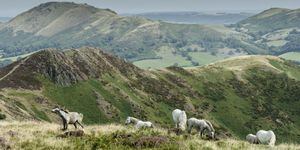
The Long Mynd is a heath and moorland plateau that forms part of the Shropshire Hills in Shropshire, England.
The high ground, which is designated as an Area of Outstanding Natural Beauty, lies between the Stiperstones range to the west and the Stretton Hills and Wenlock Edge to the east.
Much of it is owned and managed by the National Trust.
The neighbouring town of Church Stretton, nicknamed Little Switzerland, is the perfect base for walkers.
Wenlock Edge and Much Wenlock
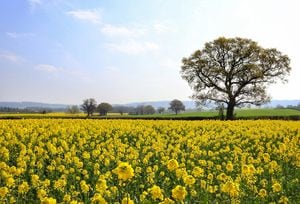
Wenlock Edge is a narrow limestone escarpment that runs for 18 miles from Craven Arms to Ironbridge, the National Trust owns eight miles of this stretch.
There is a mix of flower-rich limestone grasslands and ancient woodland along with internationally important sites for geology, making the area an important Site of Special Scientific Interest (SSSI).
Along Wenlock Edge you’ll see evidence of its old industrial use, with old quarrys and lime kilns along the way.
There is a myriad of footpaths and bridleways along Wenlock Edge which can easily be accessed from the two car parks on Wenlock Edge and from the car park at Wilderhope Manor.



